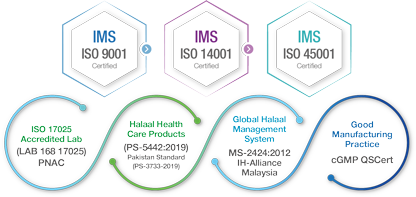

More than 200 Distributors
Around 1,000,000 Outlets
Nationwide Coverage
Bofalgan
(Paracetamol B.P.)
Brand Name
Bofalgan
Generic Name
(Paracetamol B.P.)
Therapeutic Segment
Analgesic, Antipyretic

Scan QR code to open on your mobile device.
Available as
- INFUSION
- BOFALGAN 1G/100ML INFUSION
- INJECTION
- BOFALGAN 300MG/2ML IM INJECTION
PRESCRIBING INFORMATION
For Bofalgan IV Infusion only
Summary of Product Characteristics
Bofalgan Solution for IV Infusion
1g/ 100mL Infusion
(Paracetamol)
WARNING: Risk of Medication Errors and Hepatotoxicity
Take care when prescribing, preparing, and administering
paracetamol infusion to avoid dosing errors, which could result in accidental
overdose and death. In particular, be careful to ensure that:
- Dose in milligrams (mg) and milliliters (mL) is not confused, which could result in accidental overdose and death.
- Infusion pumps are properly programmed, and
- The total daily dose of paracetamol from all sources does not exceed the maximum daily limits.
Paracetamol has been associated with cases of acute liver failure, at times resulting in liver transplant and death. Most of the liver injury cases are associated with the use of doses that exceed the maximum daily limits and often involve more than one paracetamol-containing product.
QUALITATIVE AND QUANTITATIVE COMPOSITION
Each 100mL vial contains:
Paracetamol BP……….1g
(Product specs: Bosch)
PHARMACEUTICAL FORM
Solution for I.V. infusion
CLINICAL PARTICULARS
Therapeutic Indications
Bofalgan is indicated for the short-term treatment of moderate pain, especially following surgery, and for the short-term treatment of fever, when administration by intravenous route is clinically justified by an urgent need to treat pain or hyperthermia and when other routes of administration are not possible.
POSOLOGY AND METHOD OF ADMINISTRATION
Intravenous (IV) use.
The product is restricted to adults, adolescents and children weighing more than 33 kg.
Posology:
Dosing based on patient weight:
| Patient weight | Dose per adminis. | Volume per adminis. |
Maximum volume of Paracetamol (10mg/mL) per |
Maximum Daily Dose ** |
| > 33 kg to ≤50 kg | 15 mg/kg | 1.5 mL/kg | 75 mL | 60 mg/kg not exceeding 3 g |
|
>50 kg with additional risk factors for hepatotoxicity |
1 g | 100 mL | 100 mL | 3 g |
|
>50 kg and no additional risk factors for hepatotoxicity |
1 g | 100 mL | 100 mL | 4 g |
*Patients weighing less will require smaller volumes.
**Maximum daily dose: The maximum daily dose as presented in the table above is for patients that are not receiving other paracetamol containing products and should be adjusted accordingly taking such products into account.
The minimum interval between each administration must be at least 4 hours. No more than 4 doses to be given in 24 hours.
The minimum interval between each administration in patients with severe renal insufficiency must be at least 6 hours.
Severe renal insufficiency: it is recommended, when giving paracetamol to patients with severe renal impairment (creatinine clearance ≤30mL/min), to increase the minimum interval between each administration to 6 hours.
In adults with hepatocellular insufficiency, chronic alcoholism, chronic malnutrition (low reserves of hepatic glutathione), and dehydration, the maximum daily dose must not exceed 3 g.
Method of Administration
Paracetamol infusion is administered within a 15-minute intravenous (IV).
- To remove solution in the vials, use a 0.8 mm needle (21-gauge needle) and vertically perforate the stopper at the spot specifically indicated.
- As for all solutions for infusion, it should be remembered that close monitoring is needed notably at the end of the infusion, regardless of administration route. This monitoring at the end of the infusion applies particularly for central route infusions, in order to avoid air embolism.
Contraindications
- Hypersensitivity to the active substance
- In cases of severe hepatocellular insufficiency.
Special warnings and Precautions for use
Warnings
Take care to avoid dosing errors due to confusion between milligram (mg) and milliliter (mL), which could result in accidental overdose and death It is recommended that a suitable analgesic oral treatment be used as soon as this route of administration is possible.
In order to avoid the risk of overdose, it should be checked that no other medicines administered contain either paracetamol or propacetamol.
Doses higher than those recommended entail the risk of very serious liver damage.
Clinical signs and symptoms of liver damage (including fulminant hepatitis, hepatic failure, cholestatic hepatitis, cytolytic hepatitis) are usually seen after two days of drug administration with a peak seen after 4-6 days. Treatment with antidote should be given as soon as possible.
This medicinal product contains less than 1mmol sodium (23mg) per 100mL of Paracetamol, i.e. essentially ‘sodium free’.
Precautions for use:
Paracetamol should be used with caution in cases of:
- Hepatocellular insufficiency,
- Severe renal insufficiency (creatinine clearance ≤30mL/min)
- Chronic alcoholism,
- Chronic malnutrition (low reserves of hepatic glutathione)
- Dehydration.
Interaction with other medicinal products and other forms
of interaction
- Probenecid causes an almost 2-fold reduction in clearance of paracetamol by inhibiting its conjugation with glucuronic acid. A reduction in the paracetamol dose should be considered if it is to be used concomitantly with probenecid.
- Salicylamide may prolong the elimination t½ of paracetamol.
- Caution should be taken with the concomitant intake of enzyme-inducing substances.
- Concomitant use of paracetamol (4 g per day for at least 4 days) with oral anticoagulants may lead to slight variations of INR values. In this case, increased monitoring of INR values should be conducted during the period of concomitant use as well as for 1 week after paracetamol treatment has been discontinued.
Fertility, Pregnancy and Lactation
Pregnancy: It should only be used during pregnancy after a careful benefit-risk assessment. The recommended posology and duration must be strictly
observed.
Lactation: After oral administration, paracetamol is excreted into breast milk in small quantities. No undesirable effects on nursing infants have been reported.
Effects on ability to drive and use machines
Not relevant
Undesirable Effects
As with all paracetamol products, adverse drug reactions are rare (≥1/10,000 to <1/1,000) or very rare (<1/10,000). They are described below:
| System organ class | Adverse reaction | Frequency |
| Blood and lymphatic system disorders | Thrombocytopenia, Leucopenia, Neutropenia |
Very rare |
| Cardiovascular | Hypotension | Rare |
| Liver |
Increased levels of hepatic transaminases |
Rare |
| General disorders and administration site conditions |
Malaise | Rare |
| Hypersensitivity reaction | Very rare |
Frequent adverse reactions at injection site have been reported during clinical trials (pain and burning sensation).
Very rare cases of hypersensitivity reactions ranging from simple skin rash or urticaria to anaphylactic shock have been reported and require discontinuation of treatment. Erythema, flushing, pruritus and tachycardia have also been reported.
Overdose
There is a risk of liver injury (including fulminant hepatitis, hepatic failure, cholestatic hepatitis, cytolytic hepatitis), particularly in elderly, in young children, in patients with liver disease, in cases of chronic alcoholism, in patients with chronic malnutrition and in patients receiving enzyme inducers.
Overdosing may be fatal. Symptoms generally appear within the first 24 hours and comprise nausea, vomiting, anorexia, pallor and abdominal pain.
Clinical symptoms of liver damage are usually evident initially after two days and reach a maximum after 4 to 6 days.
Immediate hospitalization before beginning treatment, a blood sample for plasma paracetamol assay should be taken, as soon as possible after the overdose.
The treatment includes administration of the antidote, N-acetylcysteine (NAC) by the IV or oral route, if possible before the 10th hour. NAC can, however, give some degree of protection even after 10 hours, but in these cases prolonged treatment is given.
PHARMACOLOGICAL PROPERTIES
Pharmacodynamic Properties
Pharmacotherapeutic group: Other Analgesics and Antipyretics,
ATC Code: N02BE01
Paracetamol provides onset of pain relief within 5 to 10 minutes after the start of administration. The peak analgesic effect is obtained in 1 hour and the duration of this effect is usually 4 to 6 hours.
Paracetamol reduces fever within 30 minutes after the start of administration with a duration of the antipyretic effect of at least 6 hours.
Mechanism of action
The precise mechanism of the analgesic and antipyretic properties of paracetamol has yet to be established; it may involve central and peripheral actions.
Pharmacokinetic Properties
Absorption
Paracetamol pharmacokinetics is linear up to 2g after single administration and after repeated administration during 24 hours. The maximal plasma concentration (Cmax) of paracetamol observed at the end of 15-minutes
intravenous infusion of 500mg and 1g of Paracetamol is about 15μg/mL and
30μg/mL respectively.
Distribution
The volume of distribution of paracetamol is approximately 1L/kg. Paracetamol is not extensively bound to plasma proteins. Following infusion of 1g paracetamol, significant concentrations of paracetamol (about 1.5μg/mL) were observed in the cerebrospinal fluid at and after the 20th minute
following infusion.
Metabolism:
Paracetamol is metabolized mainly in the liver following two major hepatic pathways: glucuronic acid conjugation and sulphuric acid conjugation. The latter route is rapidly saturable at doses that exceed the therapeutic doses. A small fraction (less than 4%) is metabolized by cytochrome P450 to a reactive intermediate (N-acetyl benzoquinone imine) which, under normal conditions of use, is rapidly detoxified by reduced glutathione and eliminated in the urine
after conjugation with cysteine and mercapturic acid. However, during massive overdosing, the quantity of this toxic metabolite is increased.
Elimination
The metabolites of paracetamol are mainly excreted in the urine. 90% of the dose administered is excreted within 24 hours, mainly as glucuronide (60-80%) and sulphate (20-30%) conjugates. Less than 5% is eliminated unchanged. Plasma half-life is 2.7 hours and total body clearance is
18L/h.
Special populations:
Renal insufficiency:
In cases of severe renal impairment (creatinine clearance 10-30mL/min), the elimination of paracetamol is slightly delayed, the elimination half-life ranging from 2 to 5.3 hours. For the glucuronide and sulphate conjugates, the elimination rate is 3 times slower in subjects with severe renal impairment than in healthy subjects. Therefore, when giving paracetamol to patients with severe renal impairment (creatinine clearance ≤30mL/min), the minimum interval between each administration should be increased to 6 hours.
Elderly:
The pharmacokinetics and the metabolism of paracetamol are not modified in elderly subjects. No dose adjustment is required in this population.
PHARMACEUTICAL PARTICULARS
Incompatibilities
Paracetamol infusion should not be mixed with other medicinal products.
Shelf life
2 years.
Special precautions for storage
- Protect from heat & sunlight, Store below 25°C.
- Do not refrigerate or freeze.
- The expiration date refers to the product correctly stored at the required condition.
- Do not use if solution contains undissolved particle.
- Do not use in case of colour change.
- Patients and healthcare professionals can also report suspected adverse drug reaction at ade@bosch-pharma.com.
- Keep out of the reach of children.
- To be sold on the prescription of a registered medical practitioner only.
Nature and contents of container
Bofalgan 1g/100mL infusion filled in clear glass vial of glass type II, the vial is closed with a rubber stopper and sealed with an aluminum seal.
MARKETING AUTHORISATION HOLDER
Head Office:
Bosch Pharmaceuticals (Pvt.) Ltd.,
8, Modern Society, Tipu Sultan Road, Karachi-75350 (Pakistan)
Manufacturing Site:
Bosch Pharmaceuticals (Pvt.) Ltd.,
Plot No. 209, Sector 23 Korangi Industrial area Karachi.
MARKETING AUTHORISATION NUMBER(S)
070607
DATE OF FIRST AUTHORISATION/RENEWAL OF THE AUTHORISATION
18th August 2011/17th August 2021
DATE OF REVISION OF THE TEXT
7th November 2023
For Bofalgan IM Injection only
Bofalgan – IM Injection
(300mg/2mL Injection)
(Paracetamol B.P.) (Product Specs.: M.S.)
For Intramuscular Use Only
COMPOSITION
Sterile, solution for injection
Each 2mL contains Paracetamol B.P. … 300mg
PHARMACOLOGICAL PROPERTIES:
Mechasim of Action:
Paracetamol inhibits the synthesis of prostaglandin in the central nervous system and peripherally blocks pain impulse generation; produces antipyresis from inhibition of hypothalamic heat-regulating center.
CLINICAL PARTICULARS:
Therapeutic Indications:
- High grade fever in patients who cannot tolerate oral medications.
- As an analgesic, paracetamol is indicated for postoperative patients where oral medication is not possible
DOSAGE:
Adults:
2-4 mL deep IM. Minimum interval of 4 hours recommended in-between doses, and 6 hours in those with hepatic and or renal impairment. Maximum of 1 gm up to 4 times daily.
Children:
(<33 kg): 15 mg/kg paracetamol Injection IM / IV up to 4 times a day, approximately as follows
Age | Dosage | ||
7-12 years: | 1.25 | to | 2 mL |
3 – 6 years: | 1 | to | 1.25 mL |
1 – 2 years: | 0.75 | to | 1 mL |
6 – 12 months: | 0.5 | to | 0.75 mL |
< 6 months: | 0.25 | to | 0.5 mL |
May be given 4-6 hours via slow IV push or via deep IM injection while symptoms persist, but Maximum dose is 60 mg /kg per day or as directed by a physician.
CONTRAINDICATION
- Hypersensitivity to paracetamol or any component of the formulation.
- Severe hepatic impairment or severe active liver disease.
WARNINGS & PRECAUTIONS
- Ethanol use: Use with caution in patients with alcoholic liver disease; consuming 3 alcoholic drinks/day may increase the risk of liver damage.
- G6PD deficiency: Use with caution in patients with known G6PD deficiency; rare reports of hemolysis have been reported.
- Hepatic impairment: Use with caution in patients with hepatic impairment or active liver disease; use of the intravenous. formulation is contraindicated in patients with severe hepatic impairment or severe active liver disease.
- Hypovolemia: Use the intravenous formulation with caution in patients with severe hypovolemia (eg, due to dehydration or blood loss).
- Renal impairment: Use with caution in patients with severe renal impairment (CrCl <30ml/min) consider dosing adjustments.
- Chronic malnutrition increases the risk of hepatic injury paracetamol should use with caution.
- It should not be administered to new born or premature infants.
- Caution in patients with chronic alcoholism (low reserves of glutathione stores) and dehydration.
ADVERSE EFFECTS
The following are some of the adverse effects that are known to be associated with paracetamol.
Adverse effects may include:
Very common ( ≥10%)
Gastrointestinal: Nausea (adults 34%; children ≥5%), vomiting (adults 15%; children ≥5%)
Common (1%-10%)
Cardiovascular: Edema (peripheral), hypervolemia, hypo/hypertension, tachycardia Central nervous system: Headache (adults 10%; children ≥1%), insomnia (adults 7%; children ≥1%), agitation (children ≥5%), anxiety, fatigue
Dermatologic: Pruritus (children ≥5%), rash
Endocrine & metabolic: Hypoalbuminemia, hypokalemia, hypomagnesemia, hypophosphatemia
Gastrointestinal: Constipation (children ≥5%), abdominal pain, diarrhea
Hematologic: Anemia
Hepatic: Transaminases increased
Local: Infusion site pain
Neuromuscular & skeletal: Muscle spasms, pain in extremity
Ocular: Periorbital edema
Renal: Oliguria (children ≥1%)
Respiratory: Atelectasis (children ≥5%), breath sounds abnormal, dyspnea, hypoxia, pleural effusion, pulmonary edema, stridor, wheezing
PREGNANCY
Paracetamol injections is classified as pregnancy category C. Administer paracetamol injection for pregnant women only if clearly needed.
LACTATION
Use with caution because low concentrations of paracetamol are excreted into breast milk and can be detected in the urine of nursing infants. Adverse reactions have generally not been observed; however, a rash caused by paracetamol exposure is reported.
DRUG INTERACTIONS
Anticonvulsants: May increase the metabolism of Paracetamol. Or diminish the effect of paracetamol. Also, may increase the risk of liver damage.
Conivaptan: May increase the serum concentration of CYP3A4 Substrates.
Dasatinib & Imatinib: Paracetamol may enhance the hepatotoxic effect of Dasatinib and Imatinib and may increase the serum concentration of Paracetamol.
Isoniazid: May enhance the adverse/toxic effect of Paracetamol.
Metyrapone: May increase the serum concentration of Paracetamol. More importantly, by inhibiting the conjugative metabolism of paracetamol, metyrapone may shift the metabolism towards the oxidative route that produces a hepatotoxic metabolite.
Peginterferon Alfa-2b: May decrease the serum concentration of CYP2D6 Substrates
Probenecid: May increase the serum concentration of Paracetamol. Probenecid may also limit the formation of at least one major non-toxic metabolite, possibly increasing the potential for formation of the toxic metabolite.
Sorafenib: Paracetamol may enhance the hepatotoxic effect of sorafenib and may increase the serum concentration of Paracetamol.
Tocilizumab: May decrease the serum concentration of CYP3A4 Substrates.
Vitamin K Antagonists (eg, warfarin): Paracetamol may enhance the anticoagulant effect of Vitamin K Antagonists. Most likely with daily paracetamol doses >1.3 g for >1 week.
Ethanol: Excessive intake of ethanol may increase the risk of paracetamol-induced hepatotoxicity. Avoid ethanol or limit to <3 drinks/day.
Laboratory Test: Urine glucose tests may produce false results while you are taking paracetamol.
OVERDOSE AND TREATMENT
Symptoms of overdosage may include nausea, vomiting, abdominal pain, diaphoresis, generalized weakness & lethargy. If an overdose of Paracetamol is suspected, blood should be withdrawn immediately for Paracetamol plasma assay, without regard to the presence or absence of symptomatology. The acute hepatotoxicity, nephrotoxicity of paracetamol can be overcome by the administration of sulfinydryl donors, e.g, N-acetyl cysteine which should be given as soon as possible after ingestion. Treatment after 12 hours is not effective. Paracetamol overdose should be treated with gastric lavage if the patient is seen within 24 hours of ingestion of the drug
DIRECTIONS
- Protect from light, store at 25°C. Do not freeze.
- Not to be used if solution is not clear. Keep out of the reach of children.
- For suspected adverse drug reaction for BOSCH products, report at ade@bosch-pharma.com
PACK:
One pack of 5’s IM injection of 2mL
WARNING:
To be sold on prescription of a registered medical practitioner only.

